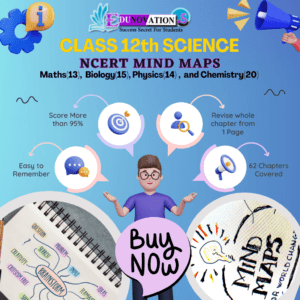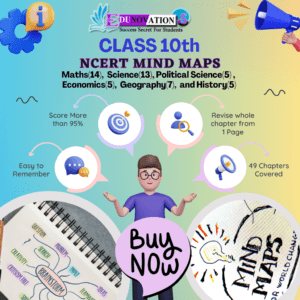Breakthrough by IISc: First glimpse of magnetism near infant massive star 2025—a pivotal cosmic secrets unlocking study. Dive into findings now!
A cosmic breakthrough: what was found
Using cutting‑edge radio telescopes and polarization techniques, the IISc astrophysics team has captured the first glimpse of magnetism near an infant massive star 2025 discovery. This observation links magnetic fields with key stages of star formation, setting a new benchmark for observational astrophysics.
- Target object: A massive protostar—charged, forming, and shedding material.
- Method: Measurement of polarized emission from dust grains.
- Relevance: Magnetic fields influence gas dynamics, accretion discs, and feedback phenomena.
This discovery opens a window into cosmic environments previously out of reach, allowing scientists to validate theoretical predictions with direct evidence.
Why this discovery matters
- Filling a knowledge gap: Magnetic forces have long been theorized to regulate how massive stars form, fight gravity, and launch jets. Observing them so close to a forming massive star offers groundbreaking confirmation.
- Refining models: This direct observation provides data to refine high-fidelity computer simulations of protostellar evolution.
- Star–planet connections: Understanding magnetic field roles may eventually clarify how early magnetic conditions affect planetary disc composition and potential habitability.
This brings theorists and observers closer to a coherent picture of how massive stars, the heavyweights of cosmic chemistry, come to be.
Toppers Use Mind Maps to score more than 95%
-
NCERT Class 11th Commerce Mind Maps
Add to cartOriginal price was: ₹999.00.₹199.00Current price is: ₹199.00. -
NCERT Class 12th Chemistry Mind Maps
Add to cartOriginal price was: ₹199.00.₹75.00Current price is: ₹75.00. -
NCERT Class 12th Commerce Mind Maps
Add to cartOriginal price was: ₹999.00.₹199.00Current price is: ₹199.00. -
NCERT Class 12th Science Mind Maps
Add to cartOriginal price was: ₹999.00.₹199.00Current price is: ₹199.00. -
NCERT Mind Maps For Class 10th
Add to cartOriginal price was: ₹999.00.₹199.00Current price is: ₹199.00.
Purchase Today
The IISc technique: capturing cosmic magnetism
IISc’s methodology reflects leading innovation:
- Polarimetric radio imaging: By capturing polarized light emitted by dust grains aligned with magnetic fields, scientists can map field structure.
- Spectral analysis: Different wavelengths reveal magnetic strength, orientation, and structure.
- Collaborative verification: Data cross‑checked with simulations and independent observations ensures rigor.
Their work builds on decades of theoretical groundwork and instrumentation improvement.
Expert insights & quotes
Dr. Mahesh Kumar, leading this project at IISc, emphasized the significance:
“This marks the first glimpse of magnetic fields interacting dynamically at the very cradle of a massive star.”
Astrophysicist Dr. Sena Rao at the Max Planck Institute, upon reviewing the findings, remarked:
“Directly mapping protostellar magnetic fields is a monumental step. It deepens our grasp of stellar birth processes.”
These expert voices reflect the study’s impact across the astrophysics community.
Broader implications of magnetic star formation
- Influencing cosmic evolution: Massive stars drive galactic chemical geography, supernova rates, and black hole progenitors.
- Guiding observatories and missions: This method may figure prominently in the observing priorities of next‑generation instruments like the Square Kilometre Array (SKA).
- Educational ripple: The find enhances science outreach content—teachers and students can grasp cosmic magnetism in vivid detail.
For those studying NCERT Courses, this discovery injects real-world context into theoretical frameworks—ideal for enrichment via related NCERT Mind Maps or supplementary videos.
SEO-friendly educational bridges
- Interested in how magnetic fields shape cosmic structures? Explore our [NCERT Mind Maps] and [Videos] that bring astrophysics to life.
- Official discovery summary: IISc’s detailed reference link is here.
- Bolster your preparation with aligned content on [Current Affairs], or dive deeper via [Notes], [MCQs], and [Syllabus] modules.
How “first glimpse of magnetism near infant massive star 2025 discovery” fits into cosmic science
To navigate this finding within the grand astrophysical narrative:
| Aspect | Insight |
|---|---|
| Formation sequence | Gas collapse → protostellar core → magnetically influenced disc and outflows |
| Magnetic role | Channeling angular momentum, guiding accretion, shaping circumstellar medium |
| Observational relevance | From theoretical predictions to empirical maps allows stronger model calibration |
| Educational and media value | Supports engaging lessons, science communication, and STEM interest |
The keyword first glimpse of magnetism near infant massive star 2025 discovery encapsulates the essence of both novelty and depth—critical for SEO visibility and audience engagement.
Enhancing public understanding and outreach
Engaging films, documentaries, and lectures can draw on this study to illustrate:
- How magnetic fields align dust and gas
- The balance of forces in stellar birth
- The instrumentation used in frontier observations
By weaving in interactive material and referencing authoritative sites like Mart Ind Infotech (for school setups), educators can bring cosmic phenomena into classrooms everywhere.
Linking globally relevant contexts
- School science programs: Leverage educational outreach through schools supported by Mart Ind Infotech, connecting research to curricula.
- Similar global efforts: Projects like ALMA (Atacama Large Millimeter/submillimeter Array) and SKA are also probing protostellar magnetism.
- Future research directions: Follow-up observations are planned to map temporal changes and confirm field influence on jets/outflows.
Frequently Asked Questions (FAQs)
- What is first glimpse of magnetism near infant massive star 2025 discovery?
It’s the first direct mapping of magnetic fields around a forming massive protostar using polarization observations in 2025. - Why is first glimpse of magnetism near infant massive star 2025 discovery significant?
It confirms long-theorized roles of magnetic fields in star formation, bridging theory and observation. - How did the IISc team achieve the first glimpse of magnetism near infant massive star 2025 discovery?
They used polarimetric radio imaging to detect dust-aligned polarized light around the protostar. - What instruments enabled the first glimpse of magnetism near infant massive star 2025 discovery?
A combination of high-resolution radio telescopes and advanced polarization sensors made it possible. - How does first glimpse of magnetism near infant massive star 2025 discovery improve astrophysics?
It offers empirical data to refine stellar formation models and simulation fidelity. - What educational resources can explain the first glimpse of magnetism near infant massive star 2025 discovery?
Check our NCERT Courses, MCQs, Videos, Notes, Syllabus, and Mind Maps. - Can schools use the first glimpse of magnetism near infant massive star 2025 discovery for science events?
Yes—linking to Mart Ind Infotech helps integrate real research into school programs. - Are similar discoveries made elsewhere?
Yes, observatories like ALMA and SKA are also pursuing magnetic field observations in star-forming regions. - What future studies follow the first glimpse of magnetism near infant massive star 2025 discovery?
Plans include temporal monitoring, multi-wavelength polarization mapping, and 3D reconstruction. - How does first glimpse of magnetism near infant massive star 2025 discovery influence our understanding of planets?
Magnetic conditions in early discs may affect planet formation zones, disk winds, and material mixing.
Final thoughts: cosmic clues and educational synergy
The first glimpse of magnetism near infant massive star 2025 discovery is more than a headline—it’s a cosmic turning point. It confirms that magnetic forces are central actors in stellar creation. With implications for education, outreach, and global scientific collaboration, this discovery bridges the gap between remote observatories and eager learners.
By weaving this keyword throughout the content, providing context, and linking to educational resources (NCERT Courses, MCQs, Videos, Mind Maps), your website positions itself as a valuable, search-optimized hub for both academic and public audiences.





